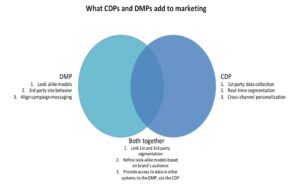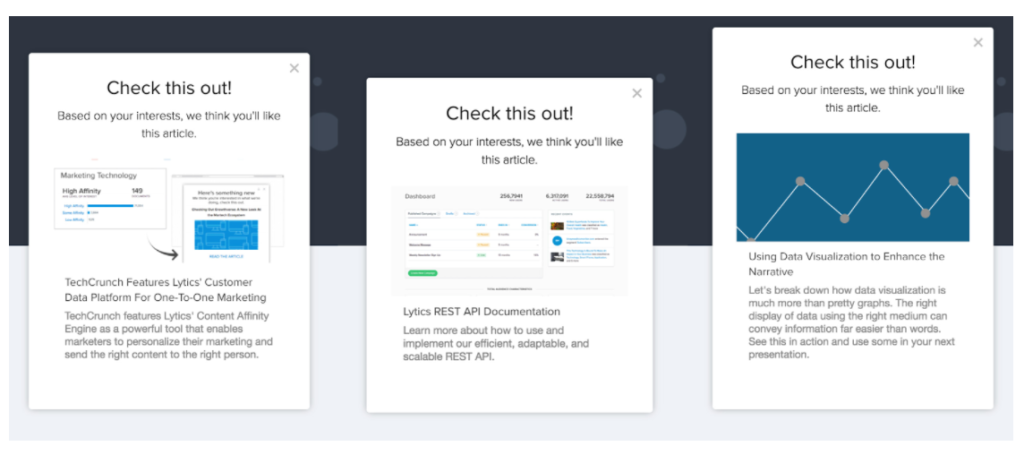But, Do I Need Both? The CDP vs. DMP Discussion Continues: A Choose Your Own Adventure Story
August 8, 2017Without question, our best-read content is about the differences between CDPs and DMPs. More than a year since we published the original blog post on the topic and coming up on a year since we consolidated it all into an ebook, it’s time to advance the discussion further. Yes, we still get asked all the time, “What’s the difference between a CDP and a DMP?” but now, more often than not, folks have a firmer grasp on the differences and want to know:
Okay, but do I need both?
And though it might be everyone’s least favorite answer…
It depends.
In an effort to provide a more satisfactory response, though, we’ve put together some general guidelines for what your life looks like with a CDP, with DMP, and with both. (Note that we’re using BlueConic as the basis for the CDP capability and painting with a bit broader brush on the DMP side of things. Since not all DMPs are created equal, if you have specific questions about a particular DMP, we can go deeper based on our clients’ experiences.) To begin, here are the critical points of comparison:
|
Attribute |
CDPs |
DMPs |
|
Anonymous data management |
Anonymous data storage; in other words, data that is collected from someone who may eventually become identified or known but isn’t right now/yet. |
Anonymized data is data that has an identifier associated with it, but that PII has been specifically hashed or otherwise de-identified |
|
Data sources (more on this here) |
First party orientation: collecting data from all of the brand’s touchpoints and data sources to tie them to actual behaviors exhibited by a unique user, whether anonymous or known |
Third party orientation: the data-set is based on millions of cookies from across the web and matched with non-PII attributes such as demographics and multi-site behaviors |
|
Data expiration and storage |
The profile created for each user is stored persistently in a database (Apache Cassandra in our case), so the data doesn’t expire and your profiles have no limit to the amount of data you can store in them, giving you a progressively richer view as the person continues to engage |
Using the cookie for data collection means that a DMP “profile” typically only lasts for 90 days before it expires (sometimes shorter, and sometimes longer as some DMP vendors offer additional storage for an additional expense) |
|
Identity matching (more on this here) |
Deterministic: BlueConic only matches and merges profiles based on a unique identifier (email address, subscriber number, etc.) |
Probabilistic: Because DMPs were built to expand advertising reach, the segments and matching are typically based on algorithmically derived guesses about links between people for look-alike modeling and high-level personalization |
|
Segment creation
|
Real time, no minimum size: When the marketer defines a segment in BlueConic, it is immediately active, so the profiles that match the segment’s criteria associate and disassociate in real time (24 milliseconds) as their attributes change. There also does not need to be a minimum number of people in a segment for it to be a viable definition. |
24 hour processing, minimum number of people: Once a segment is created in Krux, it takes 24 hours before it becomes usable for ad targeting, etc. Each segment needs to have at least 20 people in it because the algorithms require at least that number to still have a target cohort once you assume 40-60% matching. |
So do you need both? Potentially, yes, but perhaps not. As a marketer, a CDP without question gives you a better base of data to work with: it’s a dataset of your actual audience that can be activated for use cases across the entire life cycle: acquisition, engagement, conversion, and retention. There aren’t restrictions on the types of data you can collect, the segmentation is real-time, and it’s channel agnostic to ensure the seamless flow of data. If you want to:
- Collect first party data for anonymous and known individuals;
- Assemble segments in a few clicks that can be exchanged with any other system;
- Deliver personalization across channels to that individual based on their unique needs and context…
Then you don’t need a DMP. And in fact, will be underwhelmed by the DMP’s approach to doing this kind of thing where such functionality appears to exist.
However! If you have an extensive digital advertising and modeling program that relies on the DMP to:
- Find look-alike models elsewhere on the web, particularly on other companies’ pages;
- Gather data about target audiences’ interests based on their behavior on 3rd party sites;
- Align campaign messaging with specific audiences as they move throughout the internet…
Then you have good reason to keep using a DMP because you’re benefiting from what these solutions are built to do: get more of the right people interested in your brand.
Taken together, a CDP + DMP can unlock some pretty compelling use cases, including those that we’re currently running with many of our customers who:
- Pass the third party segmentation in the DMP to BlueConic for on-site personalization and distribution to other systems readily
- Use BlueConic segments as the basis for the DMP’s look-alike modeling so that the brand’s actual audience’s traits provide the starting point of a look-alike audience
- Make BlueConic the conduit for data into the DMP from a CRM, ESP, or POS (hashing the identifiable data to comply with the DMP’s privacy, of course) so that the DMP has access to some of the data in those systems
(Additionally, server-to-server integrations between BlueConic and DMPs 1) provide data about users who haven’t even been to the website, 2) provide data that was layered in after the fact, and 3) assign segmentation based on rules that weren’t there when a user was online, or that changed after they left.)

The scenarios above play out differently based on your industry-specific use cases as well, but we’ll save that for another time. Unless you can’t wait, in which case shoot us a note to chat.


